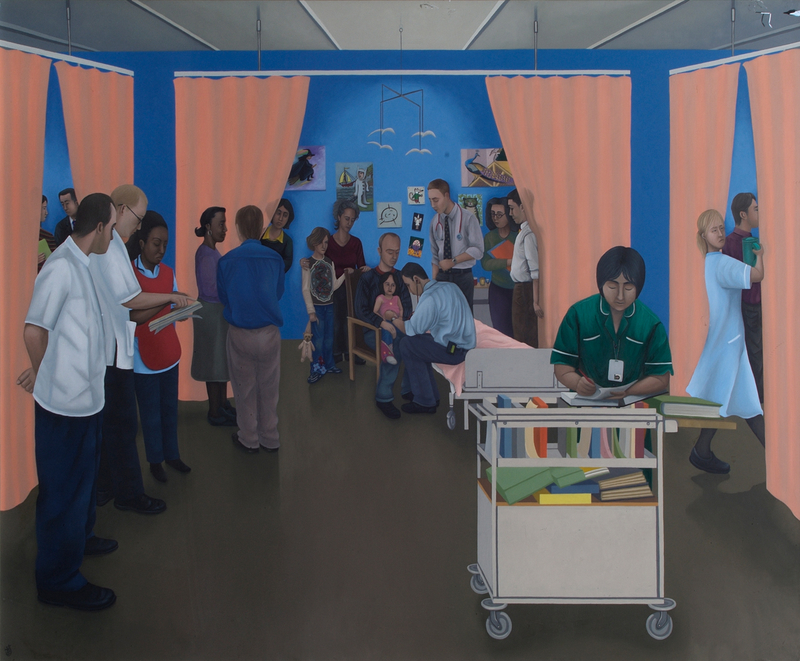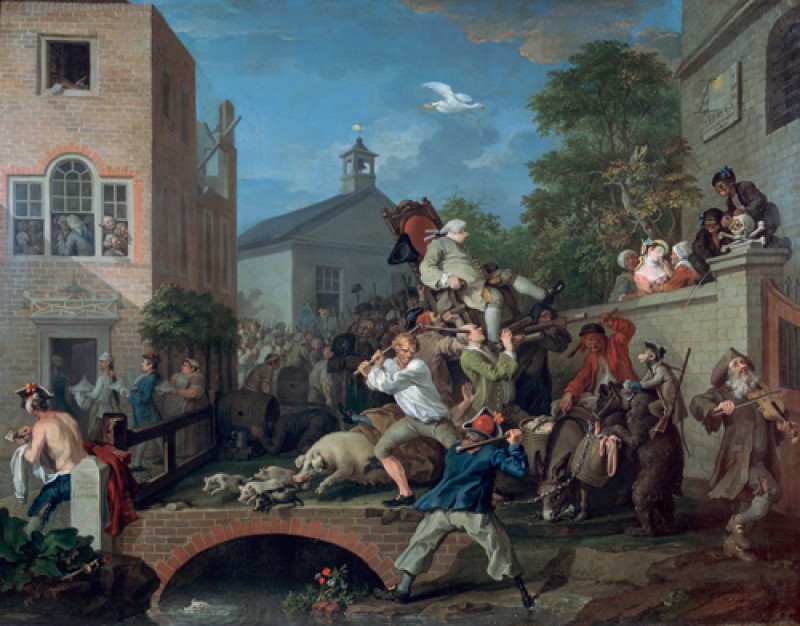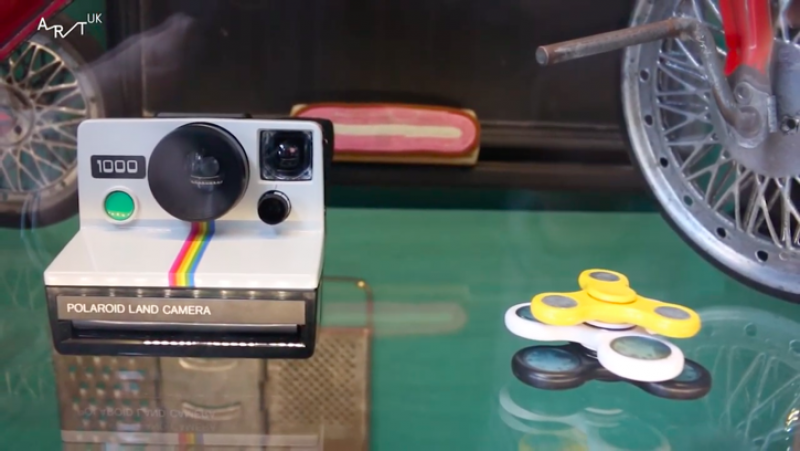'The Ward Round' by Simon Black
This audio clip describes the painting The Ward Round by Simon Black (1958–2008).
It has been created for use as part of our primary school resource, The Superpower of Looking, in order to support pupils with blindness or visual impairment to take part in the lessons.
Explore the painting further in our resource, Children in a busy hospital ward.
Full audio description text
This scene shows a busy children's ward in the Royal Free Hospital in London. It was painted in 2002 by Simon Black using oil paints on linen. It is 122 centimetres tall and 153 centimetres wide. There are 19 figures clustered in groups. They're painted as simple bold shapes that stand out against the vivid blue walls of one section of the ward.
It's a bay of three cubicles – one straight ahead and one on each side. Each cubicle can be screened by peach-coloured curtains, but all the curtains are pulled back – at least a little bit. The curtains of the central cubicle are wide open, making it a bit like a stage. It's the main focus of our attention, even though it's in the background. The open curtains reveal a back wall covered with paintings by children, and a seagull mobile suspended from the white-painted ceiling. The mobile hangs over an unoccupied bed, end onto us, which has a pink blanket and a grey metal board at its foot. It's been wheeled out a little way beyond the open curtains, into the grey floored area between the cubicles.
A doctor, with his back to us, is sitting on the left side of the bed. The patient – a little girl in a pink top and jeans – is sitting on the lap of a man – presumably her father. He is in an armchair drawn up to the left side of the bed. Resting their hands on the back of his chair are two people who we guess are the patient's mother and older sister. The sister holds a teddy bear. The family are all facing the doctor, who is listening to the little girl's tummy through a stethoscope. The doctor wears dark blue trousers and a light blue shirt. His rolled-up sleeve shows a watch on his left wrist. A pager is tucked into his waistband.
Another doctor stands by the head of the bed to the right. He wears grey trousers, a white shirt and a blue tie. A red stethoscope is looped around his neck. Two younger people stand in the centre cubicle behind him, a man and a woman, looking on. They are probably medical students. The woman wears glasses and is holding some files. A slightly older pair stand to the left of the bed, with their backs to us. They are chatting to each other. A woman peering around the cubicle curtain looks towards them. Outside the left-hand cubicle, a woman in a red tabard shows notes to two men in white medical tunics. The men are white, the woman is Black. A small gap in the curtains of the left cubicle allows a glimpse of two more people in conversation inside.
In the foreground, in the centre of the image, closer to us and to the right, a person in a green uniform, with an ID tag around their neck, leans over a filing cabinet on wheels, writing notes. A female nurse, in uniform, is stepping in through the curtains of the right-hand cubicle. She's carrying a green kettle and joining a man already in there. Although it's a busy ward, the atmosphere is sober and calm as everybody goes about their business.



